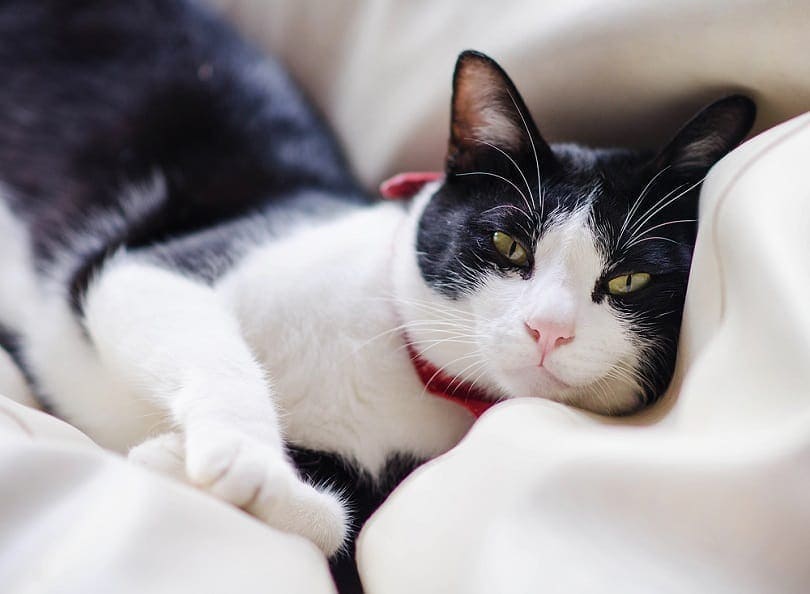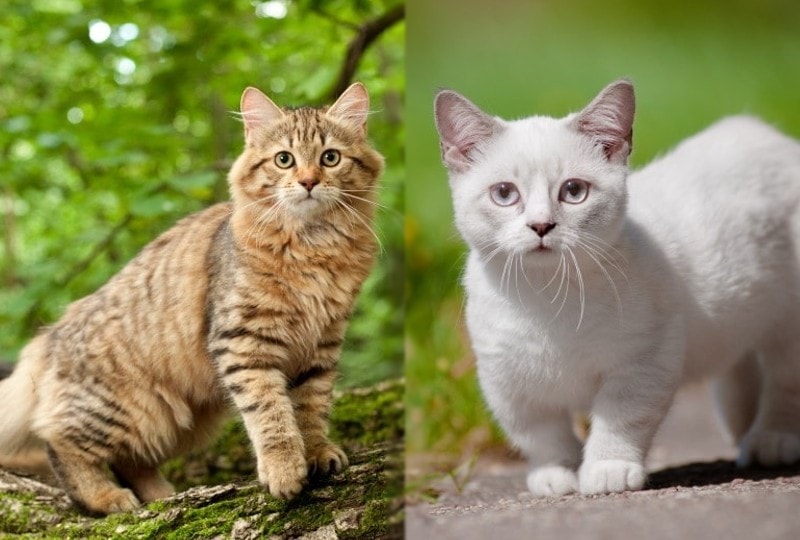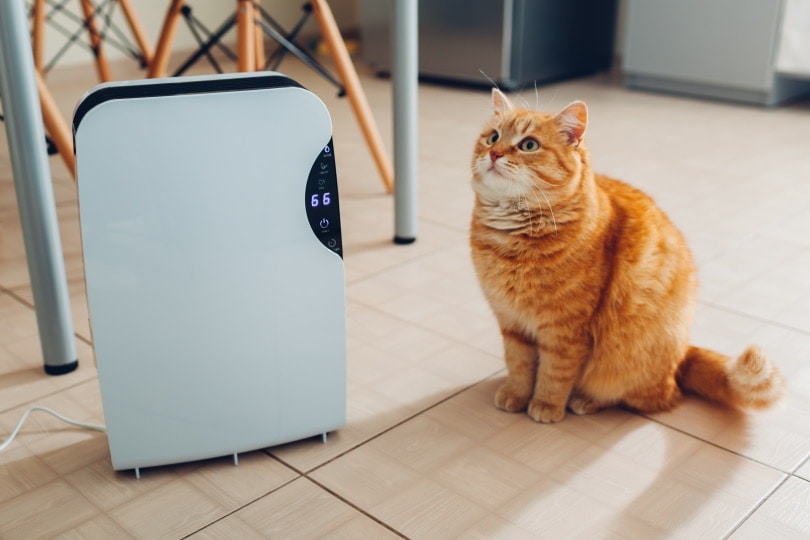5 Common Bombay Cat Health Problems: Vet Approved Facts
By Jessica Kim
Updated on
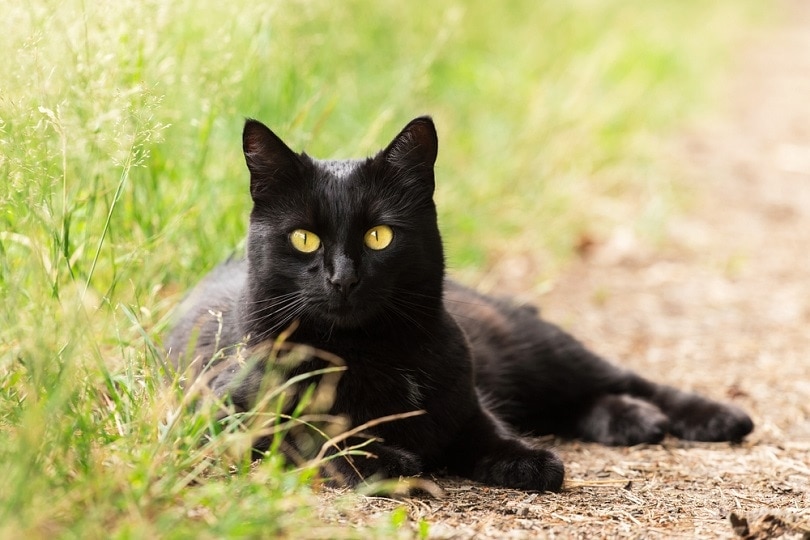
Click to Skip Ahead
The Bombay Cat is adored by many cat lovers because of its sweet personality and adorable looks. Fortunately, Bombay Cats are a relatively healthy cat breed that can live long and happy lives. However, it’s a mix between the Burmese and American Shorthair. So, it can end up developing health concerns commonly found in these two cat breeds, particularly the Burmese.
Both hereditary factors and the way an owner cares for Bombay Cats have impacts on the cat’s well-being and quality of life. While nothing in life is guaranteed, responsible cat owners should still learn about how to raise a healthy cat and be aware of genetic health concerns. Being knowledgeable can greatly increase the likelihood of a cat living a long and full life.
So, without further ado, here are five common health issues to be aware of when caring for a Bombay Cat.
 The 5 Bombay Cat Health Problems
The 5 Bombay Cat Health Problems
1. Craniofacial Defect
- Signs and Symptoms: Abnormal skull structure, absent ears, brain protrusion
- Life Stage Affected: Kitten
- Treatable: No
Craniofacial defects are often due to a Bombay Cat’s Burmese parent. Some Burmeses carry a genetic mutation commonly known as Burmese head defect (BHD). More often than not, a kitten born with BHD is stillborn or has an extremely low survival rate. Kittens with BHD can have severely deformed skulls and have the brain protruding from it. They can also have improperly formed jaws.
Because of how devastating BHD can be, it’s important to work with reputable breeders that only breed Burmeses that aren’t carriers of the BHD gene. If a breeder refuses to be transparent about medical records and pedigrees, you’re better off finding one who isn’t hesitant about showing these forms of proof.
2. Hypertrophic Cardiomyopathy
- Signs and Symptoms: Labored breathing, lethargy
- Life Stage Affected: All life stages
- Treatable: No
Hypertrophic cardiomyopathy (HCM) is a common cardiac disease that many cat breeds can develop, including the Bombay Cat. HCM refers to the thickening of ventricle walls, which can significantly reduce the efficiency of blood being pumped by the heart.
Unfortunately, HCM has no direct treatment, so veterinarians will work to develop a treatment plan that addresses and manages symptoms instead. Some treatments include heart rate regulation and clearing up pulmonary congestion.
The majority of cases of HCM are progressive, so it’s important to regularly monitor your cat’s condition after it receives a diagnosis. The cat’s lifespan varies on how far HCM has progressed. So, some cats can live for several years after diagnosis, while others may only have a few weeks or months left to live.
3. Aortic Thromboembolism
- Signs and Symptoms: Sudden pain or paralysis in rear limbs, pale or bluish nail beds and paw pads, irregular heartbeat
- Life Stage Affected: Adults, seniors
- Treatable: Yes
Aortic Thromboembolism is a condition that’s often found in mixed-breed cats. The chance of developing aortic thromboembolism further increases if the cat is a female.
This illness occurs when a cat’s blood flow is severely reduced by an obstruction. This obstruction is usually a blood clot that dislodges and gets stuck in the aorta. Since aortic thromboembolism affects the heart, it can be a particularly dangerous progression for cats that are already diagnosed with HCM.
There are several ways to treat aortic thromboembolism. Veterinarians usually try to stabilize blood flow levels first. Then, they may also prescribe aspirin or an anti-blood clotting medication to prevent more blood clots from developing. Blood clots can be removed surgically as well, but it’s not a common procedure because it can be very risky.

4. Feline Lower Urinary Tract Disease
- Signs and Symptoms: Pain while urinating, blood in urine, frequent urination
- Life Stage Affected: All life stages
- Treatable: Yes
Another common health concern a Bombay Cat may develop is Feline Lower Urinary Tract Disease (FLUTD). FLUTD isn’t a specific illness. It’s a range of different conditions that impair the bladder and urethra function. These conditions can include the formation of bladder and kidney stones, inflammatory cystitis, or bacterial infections in the urinary system.
The majority of forms of FLUTD are treatable but often recurrent. Veterinarians can prescribe medication and other treatments after a thorough assessment to find the root cause of a cat’s FLUTD.
5. Obesity
- Signs and Symptoms: Non-visible waistline, slow movements, rectangular profile
- Life Stage Affected: All life stages
- Treatable: Yes
Obesity is a common disease that cats are susceptible to, and a Bombay cat is no exception. Indoor cats are prone to becoming overweight because they don’t have as much space to roam around and exercise as outdoor cats. Indoor cats are also more likely to be neutered or spayed, which can lower activity levels. Since indoor cats have consistent access to food and treats, they can quickly be overfed as well.
While a chubby cat can look adorable, weight gain should be taken seriously because it can quickly escalate to obesity. Not only does obesity affect a cat’s appearance, but it can also have a significantly negative impact on their health and wellbeing.
Obesity can make cats more lethargic, and the additional weight gain can cause cats to develop painful joints and arthritis. It can also be a precursor to diabetes. These factors only make cats less active and willing to exercise, which only encourages more weight gain.
Keeping a Healthy Bombay Cat
No matter how aloof or independent a cat may be, it’s still the owner’s responsibility to provide care that promotes a healthy lifestyle for cats.
Regular Vet Checkups
Although it’s not the most direct way to care for a cat, veterinary check-ups and visits play a significant role in caring for cats. Establishing a strong relationship with your veterinarian can greatly benefit your cat because you can learn more about caring for your Bombay cat and raise any health concerns that you have.
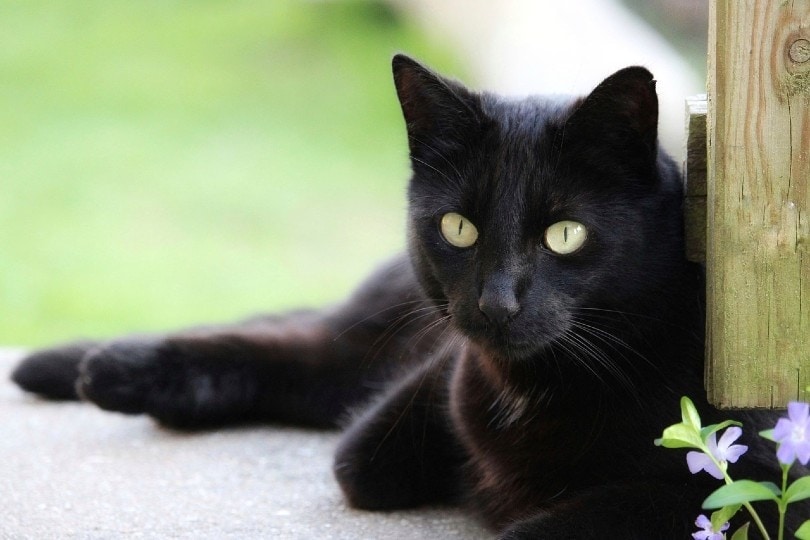
Play and Exercise
Bombay cats are also very agile and playful, so they need plenty of opportunities to play and exert their energy. These cats love to leap and climb, so they’ll benefit greatly from a large cat tree with multiple perches.
Since Bombay Cats are also very intelligent and inquisitive, they’ll enjoy playing with interactive treat toys and puzzles. They’ll benefit greatly from enrichment activities that stimulate their minds and exercise their natural instincts.
Attention and Socialization
Lastly, this cat breed is also known to be very social, so it’s important to play with them regularly. You can also try to introduce your Bombay Cat to your friends to fulfill its social needs. If a Bombay Cat doesn’t receive the attention and interaction it needs, it can end up feeling depressed or bored, which usually leads to developing unhealthy behaviors, such as destroying furniture or excessive neediness.
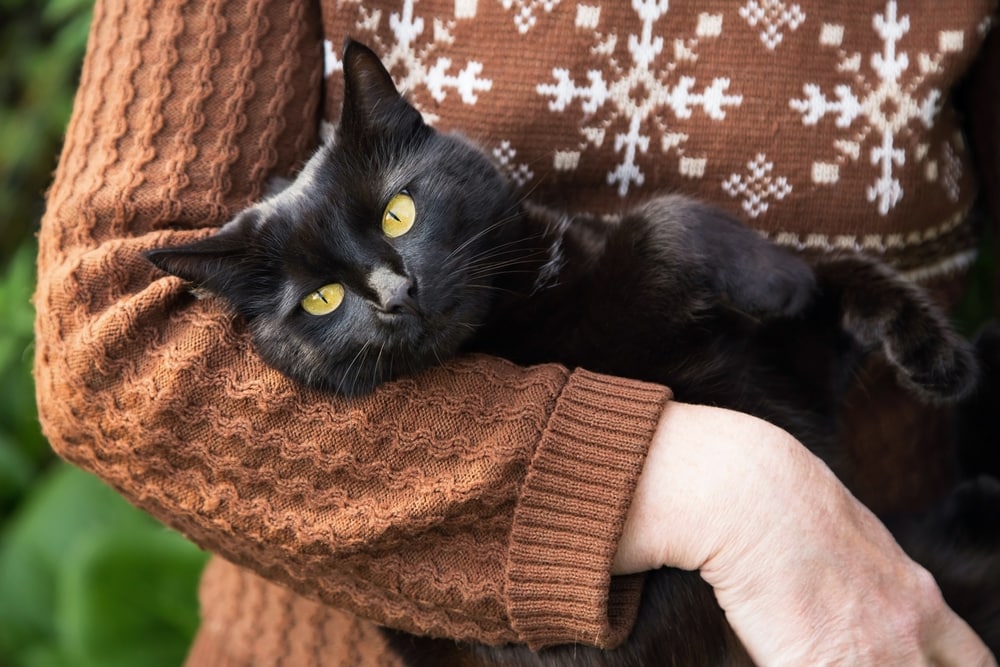
 Conclusion
Conclusion
Having awareness of Bombay Cats’ common health concerns can help you learn how to best care for your own cat. This knowledge can help you to be aware and look for any warning signs and symptoms. It can also help you know how to act if you notice any potential development of health concerns.
At the end of the day, your Bombay Cat relies on you to care for it. Proper care can greatly increase the likelihood that your cat will live a healthy life so that you can both enjoy each other’s company for many years to come.
Featured Image Credit: Viktor Sergeevich, Shutterstock

 The 5 Bombay Cat Health Problems
The 5 Bombay Cat Health Problems